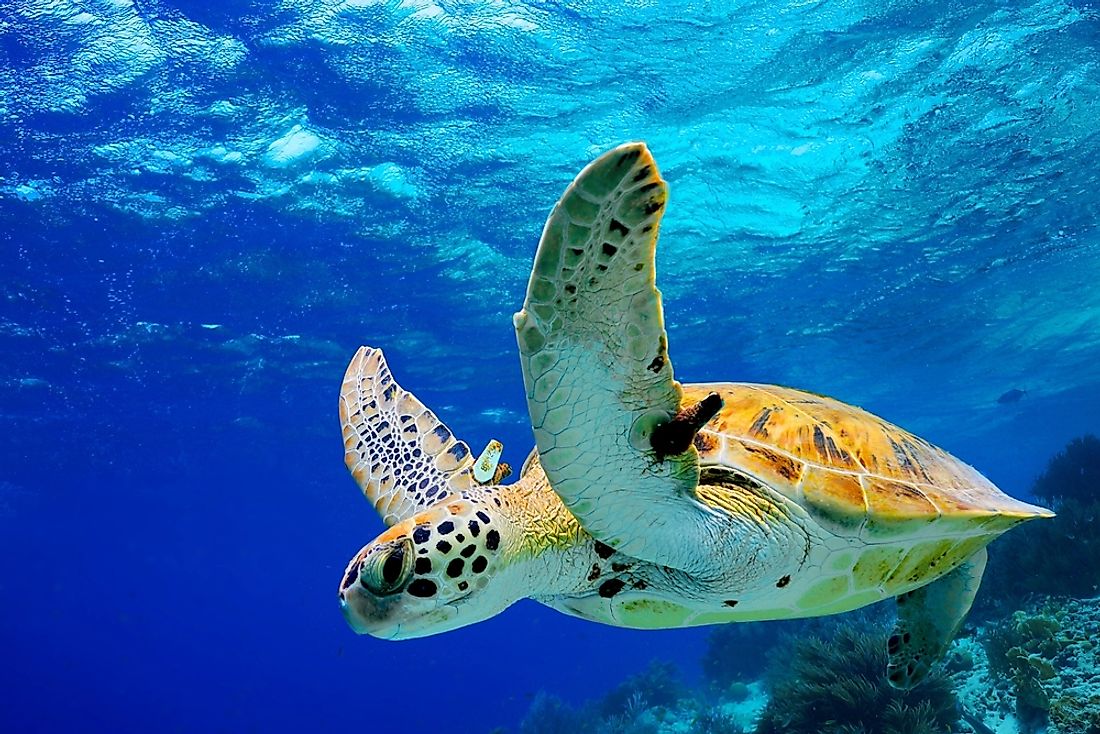Sea turtles are reptiles and not amphibians. They belong to the reptile class due to their characteristics such as being cold-blooded, having scales, and laying eggs on land.
As reptiles, sea turtles spend most of their lives in water but also come ashore to lay eggs. These ancient creatures play a crucial role in marine ecosystems and have captivated human interest for centuries. They can be found in oceans around the world, from tropical to temperate regions.
We will explore the various species of sea turtles, their unique adaptations, and the conservation efforts being made to protect these remarkable reptiles from various threats they face. So, let’s delve into the world of sea turtles and discover more about these fascinating creatures.

Credit: www.activewild.com
Characteristics Of Reptiles
Definition of reptiles: Reptiles are cold-blooded vertebrates that have dry, scaly skin and lay amniotic eggs on land. Sea turtles belong to the reptile group.
Physical characteristics: Sea turtles have a streamlined body, a hard shell, and paddle-like flippers which enable them to navigate through water. Their skin is covered with scales to protect them from predators.
Reproductive system: Female sea turtles dig a nest on the beach where they lay their eggs. After a few months, the hatchlings emerge and make their way to the sea.
Adaptations for survival: Sea turtles have evolved various adaptations to survive in their marine habitats. For instance, leatherback sea turtles have a unique soft shell that allows them to dive deeper than any other species.
Characteristics Of Amphibians
Amphibians are a diverse group of cold-blooded vertebrates that inhabit both land and water. They are characterized by their ability to live and breed in both terrestrial and aquatic environments. Amphibians include frogs, toads, salamanders, and newts.
Physically, amphibians have unique traits that set them apart from other organisms. They possess moist, glandular skin that allows for gas exchange, enabling them to respire through their skin. Additionally, they have webbed feet and powerful hind limbs for efficient swimming and jumping.
Reproduction in amphibians involves external fertilization, where the eggs are typically laid in water and then fertilized by the male. Most amphibians begin their lives as aquatic larvae, often referred to as tadpoles, and undergo metamorphosis to become fully-formed adults.
Amphibians have adapted various mechanisms to survive in their habitats. Some species have developed toxic skin secretions as a defense mechanism against predators. Others are capable of regenerating lost body parts, such as limbs or tails. Additionally, amphibians have the ability to undergo aestivation and hibernation to withstand extreme environmental conditions.
Sea Turtles: Reptiles Or Amphibians?
The question of whether sea turtles are reptiles or amphibians has long intrigued researchers and scientists. While sea turtles share some characteristics with both reptiles and amphibians, they are generally classified as reptiles due to their distinct reptilian features. These reptilian characteristics include the presence of scaly skin, a leathery shell, and the ability to lay eggs on land.
However, sea turtles also display some amphibian-like traits. For instance, they rely on both terrestrial and aquatic habitats throughout their life cycle. They possess flippers instead of feet, allowing them to navigate through water with ease, resembling the webbed feet of amphibians. Additionally, sea turtles can hold their breath for significant periods of time underwater, another feature commonly associated with amphibians.
In terms of scientific classification, sea turtles belong to the order Testudines and the family Cheloniidae or Dermochelyidae. This classification is based on extensive research and evidence gathered over the years. However, the debate regarding their classification as reptiles or amphibians continues to provoke curiosity among scientists and nature enthusiasts alike.

Credit: www.earthandanimals.com

Credit: www.earth.com
Conclusion
After examining various characteristics of sea turtles, it is clear that they are reptiles. Their scaly skin, ability to lay eggs on land, and lungs for breathing signify their reptilian nature. Although they may spend a significant part of their lives in water, they lack the key traits that define amphibians.
Understanding the classification of sea turtles as reptiles helps in their conservation and protection.





